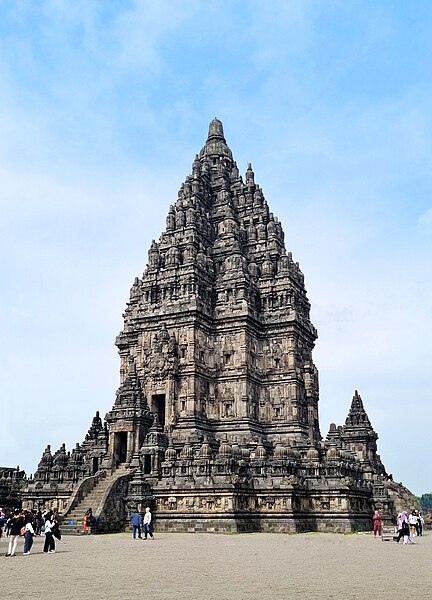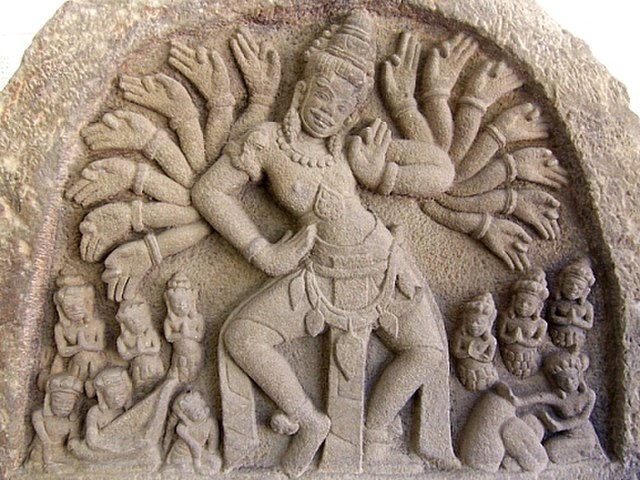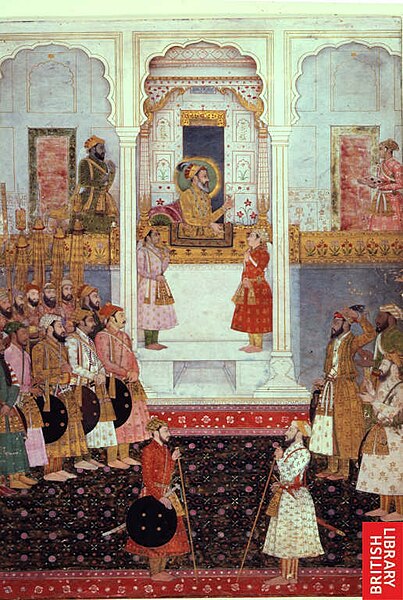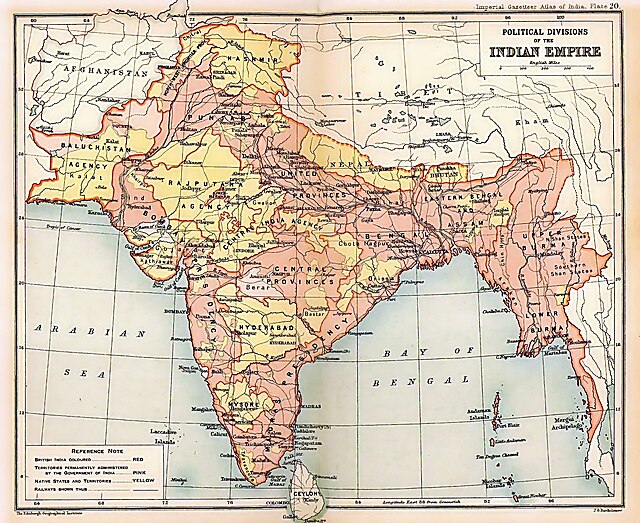Greater India, also known as the Indian cultural sphere, or the Indic world, is an English language socio-cultural concept composed of many countries and regions in South Asia, East Asia and Southeast Asia that were historically influenced by Indian culture, which itself formed from the various distinct indigenous cultures of these regions.
Angkor Wat in Cambodia is the largest Hindu temple in the world
The 9th century Shiva temple in Prambanan compound, adorned with bas-reliefs of Ramayana, located near Yogyakarta, Indonesia
Balinese Ramayana dance drama, performed in Sarasvati Garden in Ubud.
The 10th-century tympanum of the dancing Shiva in Champa, Vietnam
South Asia is the southern subregion of Asia, which is defined in both geographical and ethnic-cultural terms. As commonly conceptualized, the modern states of South Asia include Afghanistan, Bangladesh, Bhutan, India, Maldives, Nepal, Pakistan, and Sri Lanka. South Asia borders East Asia to the northeast, Central Asia to the northwest, West Asia to the west and Southeast Asia to the east. Topographically, it is dominated by the Indian subcontinent and is bounded by the Indian Ocean in the south, and the Himalayas, Karakoram, and Pamir Mountains in the north.
While South Asia had never been a coherent geopolitical region, it has a distinct geographical identity
Timur defeats the Sultan of Delhi, Nasir-u Din Mehmud, in the winter of 1397–1398
Emperor Shah Jahan and his son Prince Aurangzeb in Mughal Court, 1650
British Indian Empire in 1909. British India is shaded pink, the princely states yellow.








